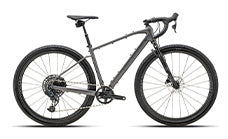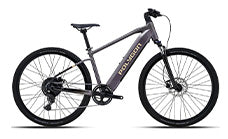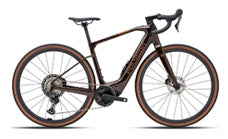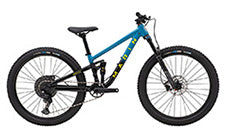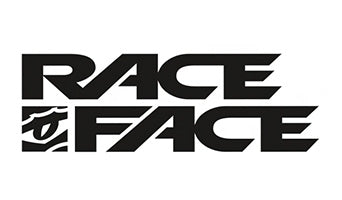Steel vs. Alloy vs. Carbon Bike Frames: Which to Choose?

The material that a frame is constructed with can have a huge impact on how it rides. The three main materials used are Carbon, Alloy and Steel. Neither one of them is better than the other as a whole but, for some riding styles, certain materials do shine.
In this piece, we will go through and describe the benefits of each material. But, before we start, let’s go through “the cost, weight, strength Triangle”. We would want the strongest and lightest bikes for the least amount of money in a perfect world. Unfortunately, you can not have all three in the current world we live in. Strong and light is always going to be expensive. Cheap and strong will always be heavy. And, light with a low cost will never be strong. Each material has its balance in this triangle, and we will show you what is best.
Alloy is a metal made by mixing a base metal with one or more other elements. This is not a new process for manufacturing using metals. For example, Copper mixed with Silver became sterling Silver many years ago. The mixing of metals can result in increased stiffness, strength or hardness.
The most common Alloy used in bikes is called 6061. It is commonly used because it is light and strong, thanks to the materials in the mix. 6061 alloy is also extremely easy to weld and manipulate.
Hydroforming is used to mould the alloy tubing into unique shapes that can accommodate suspension designs, frame geometry and look good. Hydroformed frames can also be lighter thanks to reducing the amount of tubing needed.
Alloy balances the triangle relatively evenly as it is strong, reasonably light and very strong. However, the one downside to Alloy is the material’s stiffness transfers the road vibrations through to the rider. The ride can be uncomfortable to ride for some but, that is the price paid for value. The upside to the stiffness is that alloy bikes are extremely responsive to rider input. When you put the power down, the bike wants to go.
Since Alloy is cheaper and strong, it does come with a weight penalty. Because Alloy is a metal, it tends to dent instead of crack. The durability of Alloy is phenomenal and will last a long time under most riders.
If you are ok with a stiffer overall ride that may weigh a bit more then, Alloy is the perfect material for you. Alloy will be lighter on your waller, so you will have more money to spend on road trips with your new bike.
Carbon frames use sheets of unidirectional carbon fibre bonded together using resin to make a frame. Carbon frames are essentially high tech paper mache. The big reason for the use of carbon fibre in bike frames is the stiffness to weight ratio. Carbon fibre frames are extremely light for the amount of strength you can achieve. The downside is that the price skyrockets.
Because carbon frames use sheets of carbon that all face the same direction laid on top of other sheets of the same, the compliance of a carbon frame can be tuned. For example, on most road bikes, the seat stays will have more fibres across the beam to allow more vertical compliance and retain great horizontal stiffness. This results in a more comfortable ride.
Once the fibres are optimized to get the perfect ride characteristic from the bike, they are placed in a mould. Then they are covered in a resin(glue) to bond the sheets together. The moulds are vacuum sealed to remove any air or “voids”. The frame is baked in a high-temperature oven for optimum curing. The result is a very stiff yet comfortable frame with tube shapes and a weight unachievable from other frame materials.
Carbon has a reputation for lacking in strength. However, modern manufacturing methods have all but eliminated that issue. Fatigue-induced damage is non-existent; however, the carbon may crack or snap when a frame is placed under extreme duress. Unlike metal, there is no bending or denting; it will just crack or break. Don’t let this put you off because the forces to break a carbon frame are significantly higher than any other material. The occurrences of complete failure are quite rare.
Even though they are expensive, Carbon Frames provide all of the benefits with very few downsides. This is why you will see carbon used in most professional riding and on higher-end bikes. If you want a lightweight frame that oozes performance and comfort, carbon is for you.
“Steel is real”, a catchphrase you will hear any fan of steel bikes chant on the regular. The original roads, Cruisers and Mountain Bikes were all constructed from Steel. BMX bikes still use this material, thanks to it being cheap and durable. Steel provides a uniquely comfortable ride thanks to its flex or shock-absorbing qualities. For this reason, you will see Steel being used on high-end Hardtail Mountain bikes, Touring/Gravel bikes and Freestyle BMX.
Steel is extremely strong and takes a very long time to reach a level of fatigue to be damaged. In the rare case that a steel frame is damaged or cracks, it is easily repairable. Touring or adventure racing riders prefer this material because it can be repaired if they break a frame. Even with a dent in the frame, a steel frame can last for a long time without a fix.
Despite its strength and durability, it is unbelievably comfortable thanks to its elastic properties. A steel frame flexes and moves under a rider to dissipate any feedback from the road. Hardtail MTB’s use steel to absorb shock in the rear and provide an efficient ride while maintaining traction.
Steel is cheaper to purchase as a material but, welding and assembling a quality frame can take more time. Because the material is cheap and super strong, the biggest downside is weight. Steel is very heavy, but it will last forever and never let you down.
Riders who prefer a smooth ride and prioritize reliability overweight will love Steel as their chosen frame material. There is a certain simplistic beauty with steel frames and therefore are high in demand.
Before choosing your frame material, it is best to identify the style of riding you are doing, where you will be riding, and what triangle points are important for you. If you have any further queries, don’t hesitate to contact our experienced team.














